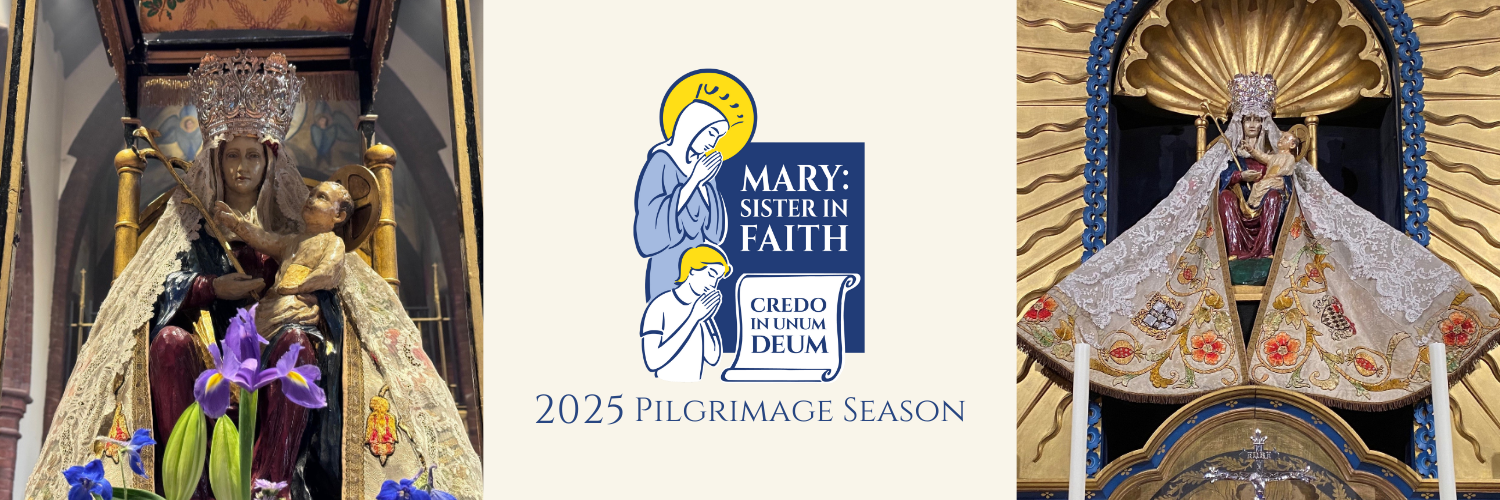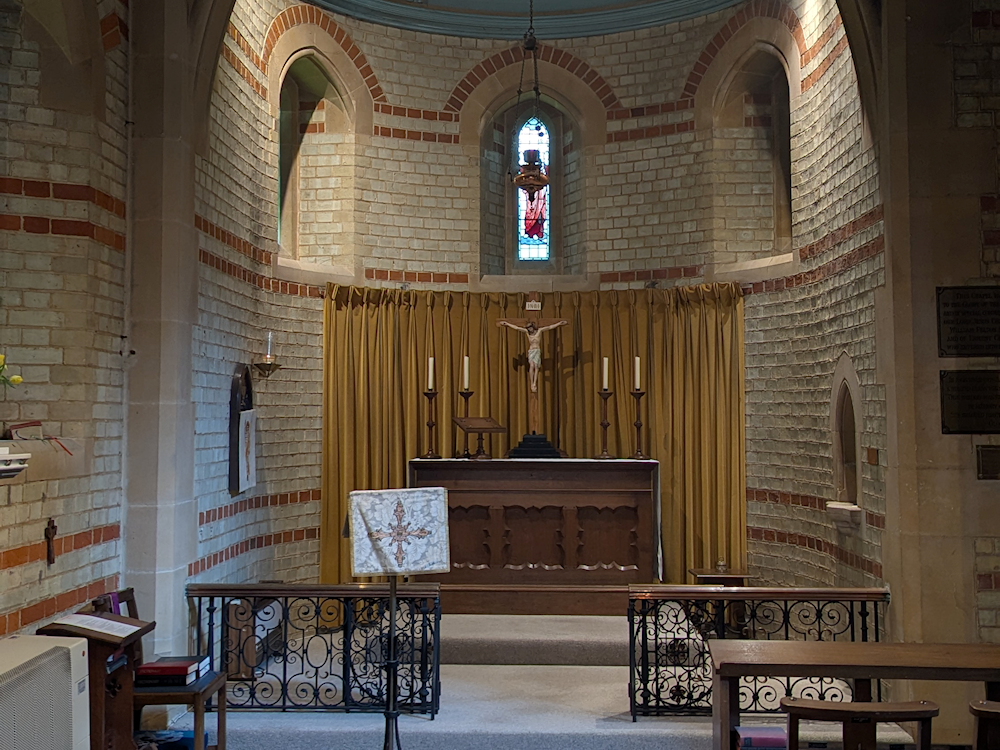
What is the Walsingham Cell?
It’s a local group of Christians who belong to the Society of Our Lady of Walsingham. It is a link between the Anglican Shrine at Walsingham in Norfolk, England – a great centre of Christian Pilgrimage and our parish.Our Walsingham Cell at Holy Trinity fosters prayer and fellowship under the patronage of Our Lady of Walsingham.
We meet on the 3rd Saturday of the month for Mass, gathering in a spirit of reverence and shared devotion. This followed by a bring and share lunch at the home of one of the members, to which everyone is invited. See below for services’ dates.
In addition to the regular service, members sometimes organise pilgrimages to the Shrine of Our Lady of Walsingham in Norfolk, seeking to deepen their faith through this long-standing Anglican tradition.
All are warmly invited to join us and learn more about this special aspect of our worshipping community.
The purpose of the society
- To deepen faith in the incarnation (i.e. that Jesus, God took flesh and became a human being)
- To honour Mary for her part in this.
- To bring more people to know and love Mary’s Shrine at Walsingham – England’s Nazareth.
- To pray for the conversion of unbelievers, and the unity of Christians.
What are members asked to do?
- To be faithful members of the local church.
- To encourage pilgrimage to Walsingham and other holy places by their own example.
- To pray for the work of the shrine at Walsingham
- To pray and work for the spread of the Christian Faith, for Christian Unity, and for their own parish.
- To say the Angelus, or one decade of the Rosary, every day as a private devotion.
History of the Cell at Hawley Green
The cell was formed on Mothering Sunday, 1986 with Fr. Ivor M Hancock as Superior. It is dedicated to Our Lady of Walsingham and to Saints Francis and Clare of Assisi. The cell currently consists of 13 members.
There is a shrine in the Resurrection Chapel of Holy Trinity Church to remind everybody of the Shrine at Walsingham and what it stands for. Small votive candles are lit before services, as a sign of prayer for Walsingham and our parish.
An Introduction to Walsingham – England’s Nazareth
Origins
Walsingham’s history as a pilgrimage centre stretches back to Saxon times. In 1061, during the reign of Edward the Confessor, Richeldis, the widow of the lord of the manor of Walsingham Parva, had a vision in which Our Lady appeared to her and took her in spirit to Nazareth. Here she was shown the the place where the Angel Gabriel had appeared to her at the Annunciation. She was told to take note of the measurements of the Holy House and to build a reproduction of it in Walsingham, to be a place of pilgrimage; England’s Nazareth.
Richeldis had the vision three times, and then hastened to carry out the instructions she had received. The matter was put in the hands of skilled carpenters, but the question arose, where should the house be built? There seem to be two traditions:
The first tradition states that a spring of water erupted at the location where the house was to be built. This holy well became part of the great Augustinian Priory in which the Holy House built by Richeldis was later enshrined. The second tradition states that during the night there was a heavy fall of dew, but in a certain meadow two spaces of about equal size remained quite dry. Richeldis took this as a sign that the house was to be set up on one of these plots, and chose the one that was close to a well (the Holy Well?).
Pilgrims came in huge numbers. They stopped a mile outside Walsingham at the Slipper Chapel to remove their shoes. Kings, nobles, and ordinary folk entered England’s Nazareth as equals to worship Jesus, the Son of God and child of Mary.
Destruction
The upheavals of the Reformation, as a result of King Henry VIIIs dispute with Rome brought about the suppression of the Shrine in 1538. The statue of Our Lady of Walsingham (Mary holding Jesus on her knee) was taken to London to be burnt. The Priory was dismantled and left in ruins. This could have been the end of the story, however late in the 19th Century interest in the antiquities of Walsingham began to revive.
Restoration
In 1897 Miss Charlotte Boyd restored the Slipper Chapel as a place of Roman Catholic devotion; regular pilgrimages began there in 1934. In 1922 Fr. Hope Patten, the Vicar of Walsingham, set up in the Parish Church a new image of the Virgin and child, copied from the seal of the medieval Priors of Walsingham. In 1931 this statue was placed in a restored replica of the Holy House in its own Shrine Church, now the centre of Anglican pilgrimage.
Other Christian traditions are also represented in Walsingham. The Orthodox from Russia have been associated with Walsingham since the outset of the restoration of pilgrimage. They have a church in the old railway station and in the nearby village of Great Walsingham. The Methodist church just off Friday Market is one of the oldest in East Anglia, a testimony to the impact of John Wesley’s ministry, preaching in Walsingham at the market cross.
Pilgrimage today
Pilgrimage is a statement about the progression of our lives from birth, through death, to the presence of God in resurrection. It is about going to a place of meeting, on earth, to encounter in stillness and in worship, the living God.
At the heart of Walsingham is the story of Jesus of Nazareth, and in particular the home Mary his mother provides for him. Into their family she welcomes all people, especially those for whom her son showed deepest concern in his life on earth; young people, single people, worried parents, fragile and sinful people, and the sick.
In Walsingham, England’s Nazareth, may you encounter God, revealed in Jesus Christ. In him may you joyfully find healing and peace and learn to live as part of his family.
Need more help?
Contact Pauline Scott
